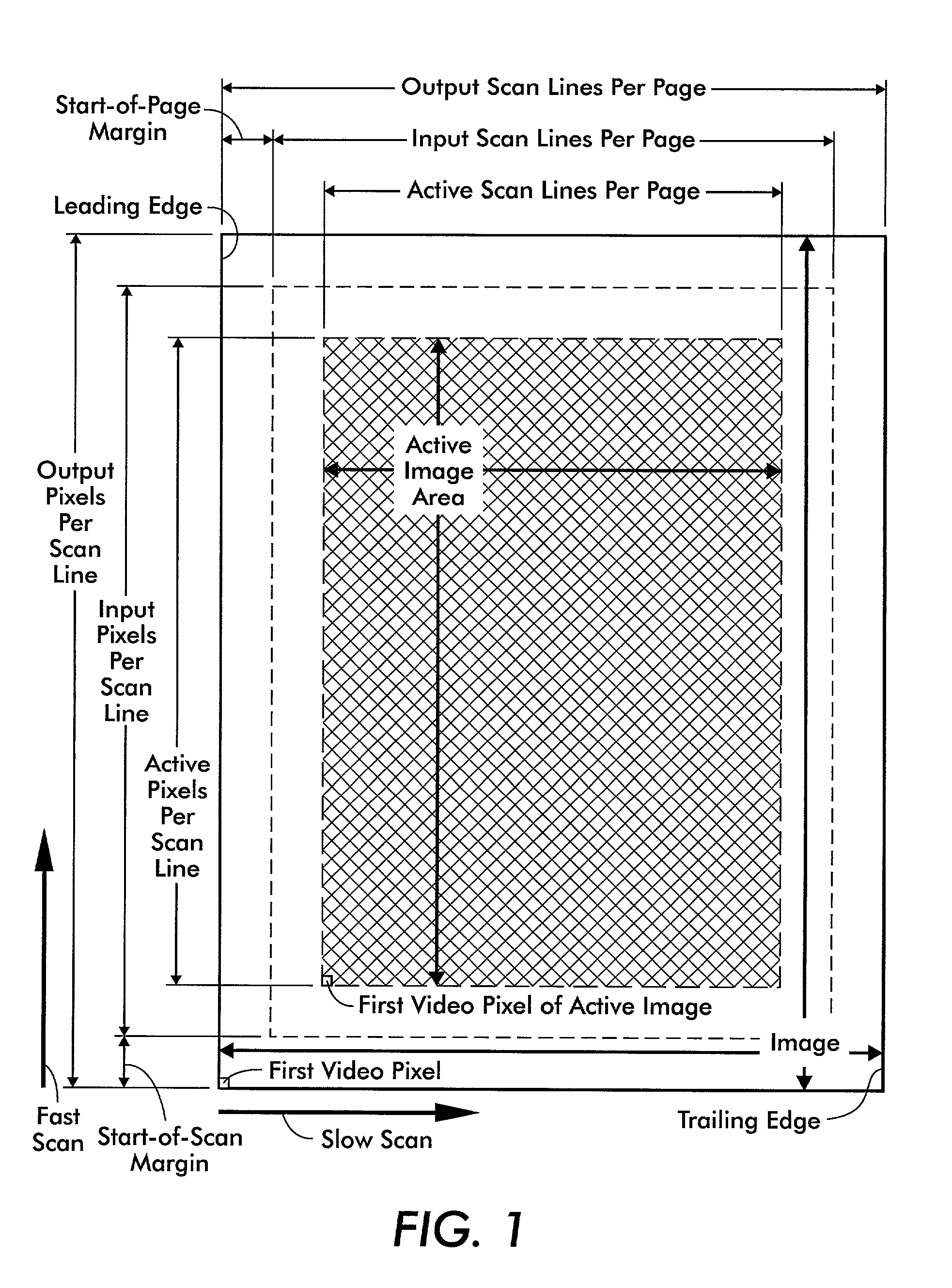Progressive image shift for a saddle-stitched document
- Summary
- Abstract
- Description
- Claims
- Application Information
AI Technical Summary
Benefits of technology
Problems solved by technology
Method used
Image
Examples
Embodiment Construction
[0010]The disclosed embodiment is an application of image shift hardware which is implemented in an image handling module of the printer controller, and supports positive and negative shifts in the slow scan direction to the image data while it is still in compressed form. This feature can be used for progressive image shift where each page in the job is shifted by a different amount. This progressive shift, for example, can be used for making saddle-stitched booklets when printing two-up or four-up page images. In such a booklet the gutter (margin) for each page is different from the previous, as is necessary for the pages to align at the outer edge of the booklet after trimming.
[0011]This system has the ability to combine page images in real time during printing to produce saddle-stitched booklets. ReRIPing is not required, even though the document was not RIPed for saddle-stitched printing, as is the usual case. This is because, in the normal case, the pages exist in compressed f...
PUM
 Login to View More
Login to View More Abstract
Description
Claims
Application Information
 Login to View More
Login to View More - R&D
- Intellectual Property
- Life Sciences
- Materials
- Tech Scout
- Unparalleled Data Quality
- Higher Quality Content
- 60% Fewer Hallucinations
Browse by: Latest US Patents, China's latest patents, Technical Efficacy Thesaurus, Application Domain, Technology Topic, Popular Technical Reports.
© 2025 PatSnap. All rights reserved.Legal|Privacy policy|Modern Slavery Act Transparency Statement|Sitemap|About US| Contact US: help@patsnap.com


